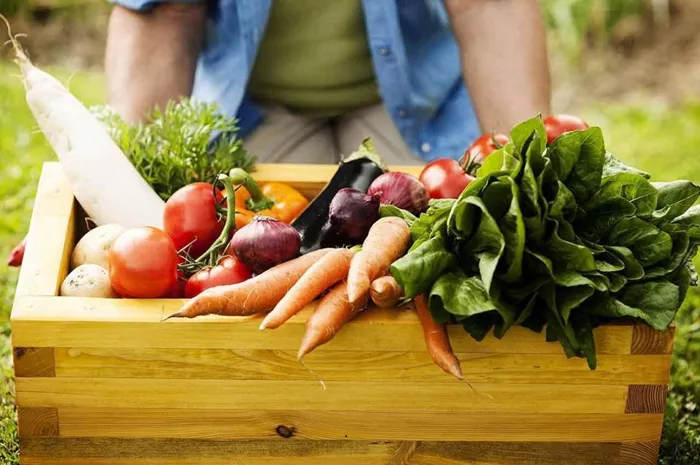When creating a vibrant garden full of thriving blooms and robust vegetables, pairing the right plants together is essential. Companion planting can support pest control, attract pollinators, and encourage healthy growth—but some plant combinations can do more harm than good. According to gardening experts, certain flowers, herbs, and vegetables release chemicals or attract pests that can stunt growth, spread disease, or inhibit root development in nearby plants. Below are 16 plant pairings you should avoid to ensure both your flowers and food crops flourish harmoniously.
Beans and Onions
Onions release allicin, a natural antibacterial gas that can harm beneficial soil bacteria. This interferes with the nitrogen-fixing process crucial for beans, stunting their early growth and producing smaller crops. Keeping flowering legumes like beans far from onion patches will help them blossom to their full potential.
Tomatoes and Potatoes
Though these are both popular garden staples, planting tomatoes and potatoes near each other can backfire. They attract similar pests and are vulnerable to the same diseases, including blight. This proximity can turn a lush vegetable and flower bed into a haven for plant stress.
Corn and Tomatoes
Both corn and tomatoes are heavy feeders, requiring rich soil and full sun. When planted together, they compete for nutrients, and tall corn stalks can overshadow tomato flowers, limiting their access to sunlight and stunting blossom development.
Tomatoes and Brassicas
Tomatoes should never be placed beside brassicas (like broccoli, cauliflower, or kale). These nutrient-demanding plants can exhaust the soil, leaving little for tomatoes to flower and fruit properly.
Cucumbers and Squash
While cucumbers and squash may look like great garden neighbors, their shared family background (Cucurbitaceae) means they compete intensely for nutrients. Together, they can deplete the soil rapidly, leaving nearby flowers and herbs in nutrient-deficient conditions.
Lettuce and Celery
Celery tends to attract aphids and whiteflies—pests that can easily transfer to delicate flowering lettuces. Keeping your crisp greens and decorative leafy crops separated will reduce infestation risks.
Fennel and Tomatoes
Fennel is known to inhibit the growth of many plants, especially tomatoes. Its root secretions can be particularly unfriendly to flowering vegetable varieties. Grow fennel in containers to protect your blossoming tomatoes and companion flowers.
Peppers and Cabbage
Peppers, part of the nightshade family, are incompatible with cabbage and other brassicas. The nutrients cabbage absorbs can weaken pepper plants, resulting in poor flowering and smaller yields.
Potatoes and Zucchini
Both potatoes and zucchini are vigorous growers and nutrient-demanding. Their close planting results in weak, underdeveloped zucchini blossoms and malformed potato tubers, reducing both yield and aesthetic value in your garden beds.
Carrots and Parsnips
Belonging to the same botanical family, carrots and parsnips share common pests like the carrot root fly. These insects can move from one root crop to the other, spreading damage and impacting flowering herbs or nearby blooms that rely on root health.
Asparagus and Onions
Asparagus and onions face overlapping pest problems, particularly from cutworms. Onions also release compounds that inhibit the healthy rise of asparagus stalks, making it hard for surrounding flowers or herbs to benefit from a unified garden ecosystem.
Pumpkins and Summer Squash
These two colorful and flowering vegetables cross-pollinate easily, producing odd fruits that lack flavor and charm. Plus, they share pests like squash bugs and diseases such as powdery mildew, which can harm neighboring flower beds.
Fennel and Eggplant
Fennel again proves to be a challenging neighbor—especially for eggplants. Its root emissions can inhibit eggplant growth, making it difficult for these flowering vegetables to develop properly. Keep fennel contained to prevent it from harming surrounding plants.
Peas and Garlic
Garlic emits sulfur compounds that slow pea growth. Since garlic also stunts other flowering crops like beans, sage, and parsley, it’s wise to grow it in isolated patches away from delicate blossoms and vines.
Spinach and Potatoes
Potatoes carry fungal diseases like blight, which can quickly spread to tender leafy vegetables like spinach. When affected, nearby flowering herbs and edible greens may also suffer, especially in moist conditions.
Broccoli and Strawberries
While strawberries can brighten a garden with their blooms and fruit, placing them next to broccoli can lead to competition for nitrogen. Worse, broccoli can spread verticillium wilt to strawberries—a deadly fungus that prevents flowering and kills plants.
To maintain a flourishing garden full of healthy vegetables, aromatic herbs, and vibrant flowers, be mindful of what plants you group together. Avoiding these 16 combinations ensures your


